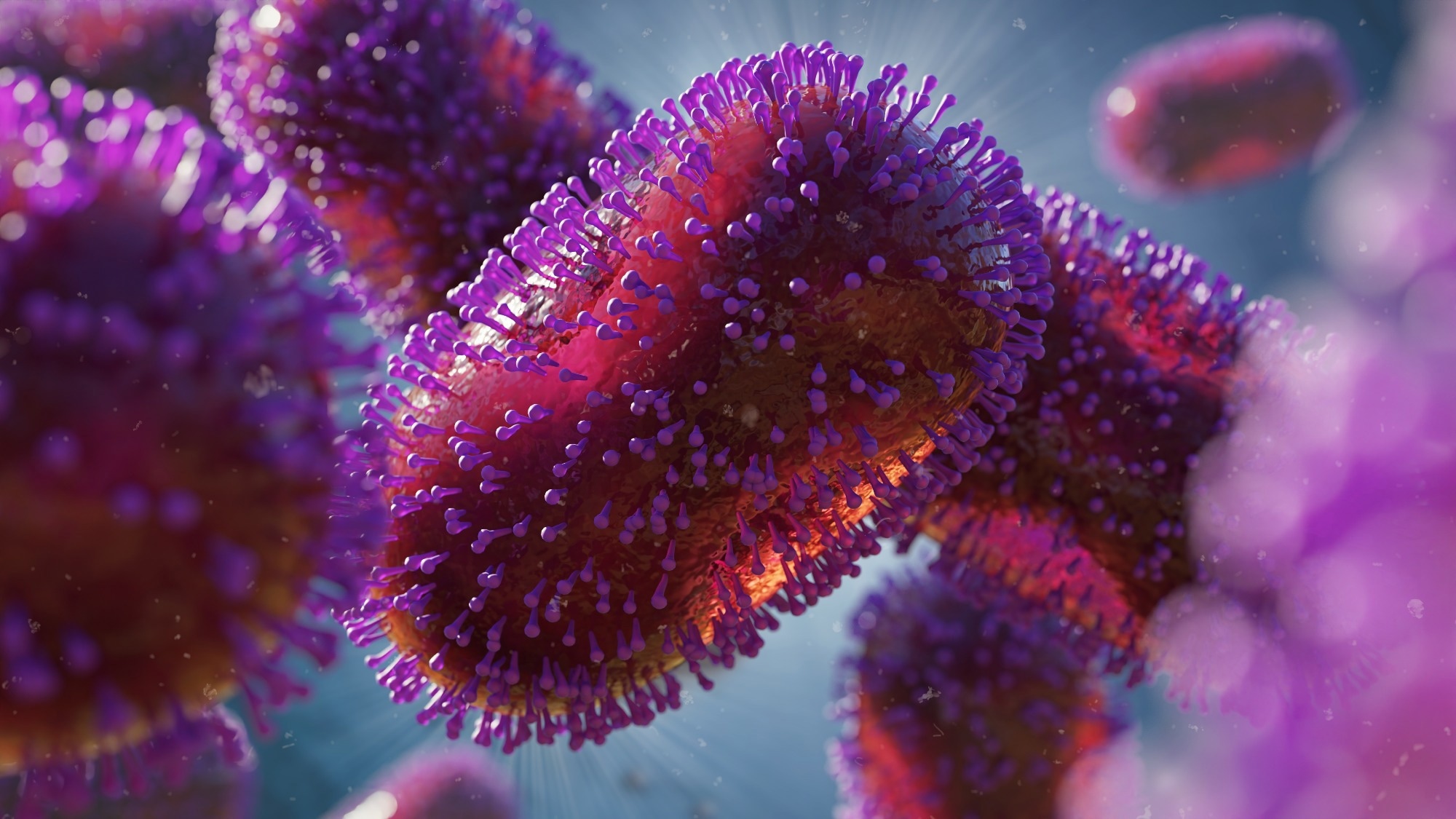In a recent article published in iScience, researchers demonstrated that individuals recovering from mpox virus (MPXV) infection have neutralizing antibodies that target MPXV antigens A35R and H3L.
 Study: Monkeypox infection elicits strong antibody and B cell response against A35R and H3L antigens. Image Credit: Dotted Yeti/Shutterstock
Study: Monkeypox infection elicits strong antibody and B cell response against A35R and H3L antigens. Image Credit: Dotted Yeti/Shutterstock
Background
MPXV, belonging to the Orthopoxvirus genus, is a close relative of the Vaccinia virus (VACV). It expresses ~25 proteins on its mature virion (MV) and six proteins on its enveloped virion (EV), with the former being the dominant form during inter-host transmission and the latter during intra-host transmission.
Though the MPXV case mortality rate was just about 0.1% for the 2022 MPXV outbreak, its cases are surging, especially in Europe and America. Thus, there is an urgent need for rapid antigen-based serological assays for MPXV diagnosis.
These tests could be advantages, for they would require a non-biosafety level 3 (BSL3) point of care site only. Additionally, serological assays could help identify T cells, but more importantly, B cell markers, leading to the extraction of neutralizing antibodies that could later serve as therapeutics.
Most importantly, serological assays could highlight targets for MPXV vaccines.
About the study
In the present study, researchers first expressed two MPXV antigens from the MV form and one from the EV form. Next, they tested their reactivity to sera from MPXV convalescents and compared it to the immune responses from vaccinated individuals who received a VACV-based vaccine, JYNNEOS. The researchers used an enzyme-linked immunosorbent assay (ELISA) to test the binding between heat-inactivated sera from MPXV convalescents and vaccinated individuals.
The study population comprised 11 MPXV recoverees identified in Israel between May and June 2022. The team collected their serum samples 33 to 62 days post-infection. Likewise, they collected samples from six recently vaccinated male donors (VPXV) who had received JYNNEOS and two cohorts of MPXV-uninfected male donors below and above 45 years of age. The researchers expected that the latter cohort had received a Vaccinia-based vaccine in the past.
Studies have shown that VACV vaccination elicits serum neutralization against VACV Lister. Thus, the team examined whether sera, specifically protein-A-purified immunoglobulins (IgG) from MPXV recoverees, exhibited neutralizing activity in a plaque reduction neutralization test (PRNT). This experiment had both negative and positive controls. While purified IgG from uninfected donors less than 45 years served as negative controls, and those from vaccinated donors served as the positive control. Furthermore, the team repeated this experiment post adding complement serum, known to neutralize the MV and EV forms of MPXV and VACV.
Finally, the team mapped three MPXV antigens elicited against either MPXV or VACV infection. These were A35R from the EV form, M1R, and H3L from the MV form.
Study findings
The study population comprised only males, 23 to 39 years of age, with reverse transcription-polymerase chain reaction (RT-PCR)-confirmed MPXV infection. Their symptoms included rash, blisters, and fever. Heat-inactivated sera from all MPXV recoverees and recent and past vaccinated (i.e., VPXV and >45yo, respectively) reacted with VACV, indicating the longevity of Vaccinia vaccination. Though, expectedly, sera from uninfected <45yo donors had significantly lower binding to the inactivated VACV.
In the PRNT assay, four MPXV recoverees exhibited some detectable neutralizing activity. Yet, all exhibited markedly less neutralization than vaccinated donors. Surprisingly, another four MPXV recoverees showed detectable neutralization activity after adding complement. They also exhibited a 10 to 44% improved neutralizing activity.
The researchers noted that sera from MPXV recoverees reacted with A35R antigen depending on the dose. Moreover, it exhibited the highest activity than vaccinated and uninfected groups. On the contrary, MPXV recoverees the most strongly recognized M1R compared to uninfected less than 45-year-olds. Yet, their response was comparable to that of the vaccinated group. Likewise, the immune response to the third antigen, H3L, was more pronounced for MPXV recoverees than vaccinated and uninfected groups, albeit binding was not substantially different.
Conclusions
To summarize, sera from MPXV convalescents had neutralizing antibodies and B cells against two MPXV antigens. A35R and H3L. A35R is one of the six proteins expressed in the EV form of MPXV, whereas the MV form of the virus expresses the H3L antigen. Moreover, these individuals elicited a stronger B cell response to these antigens than vaccinated individuals, indicating the slight difference between the two viruses. Though homologous, amino acid sequences of the two antigens vary slightly between MPXV and VACV.
MPXV convalescents did not display substantial neutralizing activity against VACV in PRNT assay one to two months after infection. However, they bound a 124-amino acid fragment of A35R antigen, markedly more than vaccinated or uninfected donors. It is noteworthy that plaque assay detects MV- rather than EV-form-related MPXV and VACV inhibition. Lastly, MPXV-specific antibodies and T cells also contributed to viral clearance.
Journal reference:
- Yefet, R., Friedel, N., Tamir, H., Polonsky, K., Mor, M., Cherry-Mimran, L., Taleb, E., Hagin, D., Sprecher, E., Israely, T., Freund, N.T. (2023). Monkeypox infection elicits strong antibody and B cell response against A35R and H3L antigens. ISCIENCE. doi: https://doi.org/10.1016/j.isci.2023.105957 https://www.sciencedirect.com/science/article/pii/S2589004223000342